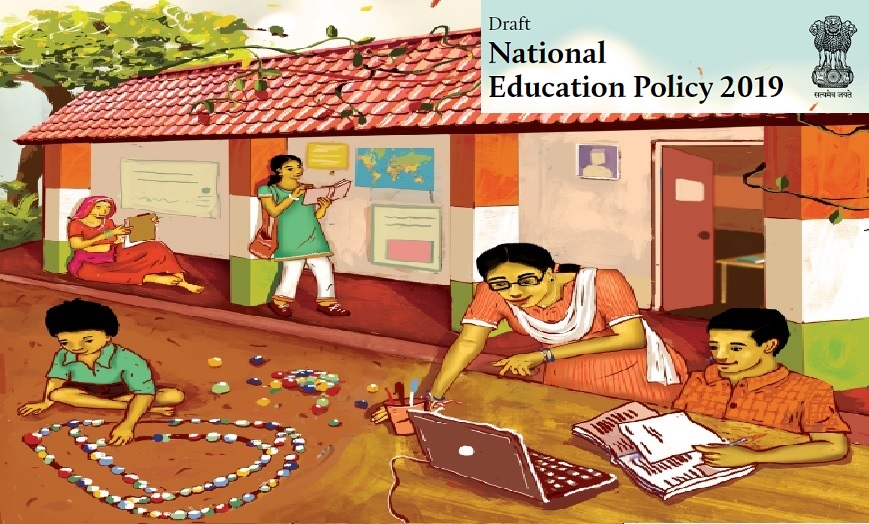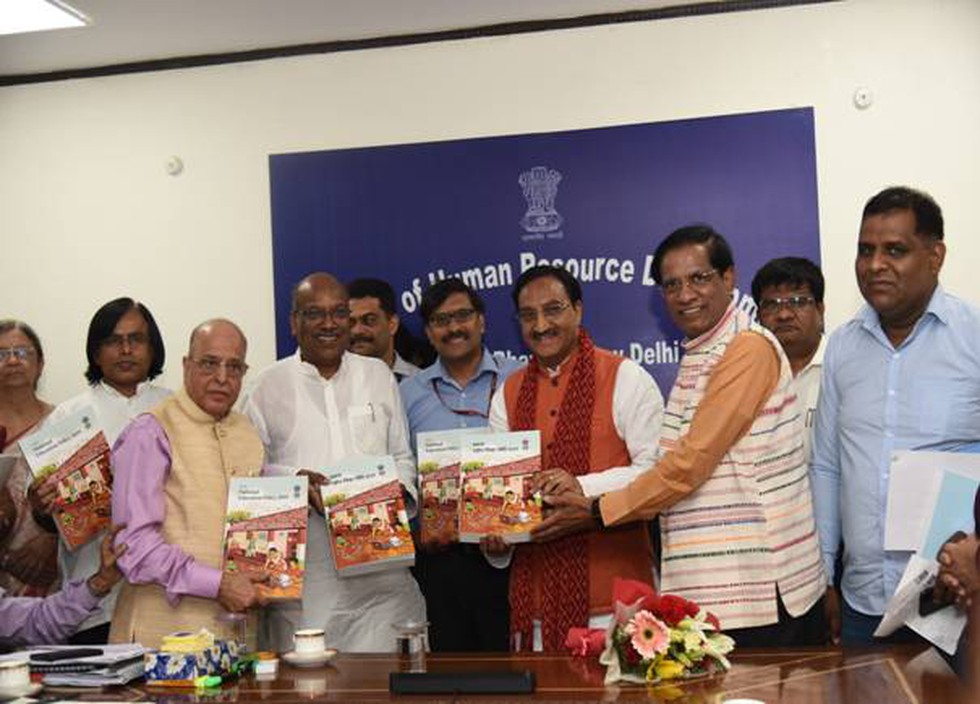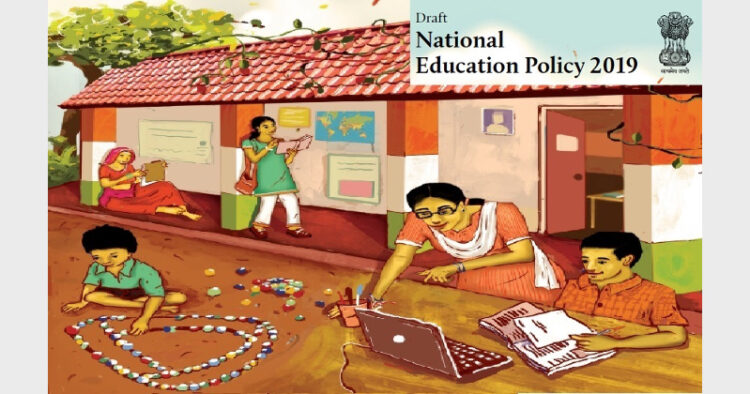The committee has taken a long term approach, without thinking of immediate gains. It talks of the next decade when India will be a ten trillion dollar economy, when it will not merely be driven by natural resources but also knowledge resources.
– Aaditya Tiwari

Mandukya Upanishad says, ‘Sa Vidya YaVimuktaye’, knowledge is that which liberates. This oft repeated line in the conferences on education is at present absent from our education system. The last commission on education whose recommendations were accepted was in1986 (modified further in 1992), while we have moved from the age of steam engine to bullet trains. The existing system is so dear to us that we would rather have it as a relic than modernize. Any initiative of the government to bring the slightest change is meted with protests and attempts to discredit begin.
The recently released Draft Education Policy 2019report prepared under the chairmanship of K Kasturirangan is also making news. While still a draft, it is being alleged that it is an attempt to impose Hindi language on non-Hindi speaking states. Nothing can be farther from truth. In essence, what the policy aims to achieve is to create independent learners on the lines of ‘Sa Vidya YaVimuktaye’.
It says, ‘National Education Policy 2019 provides a framework for the transformation and reinvigoration of the education system in order to respond to the requirements of fast-changing, knowledge-based societies while taking into account the diversity of the Indian people, their traditions, cultures, and languages.’Kasturirangan committee report is a brave attempt to overhaul our education system. The committee correctly locates ‘schools’ as the epicentre of the falling standards of education in our nation and has some ‘out of the box ideas’ to course correct.
The committee has taken a long term approach, without thinking of immediate gains. It talks of the next decade when India will be a ten trillion dollar economy, then it will not merely be driven by natural resources but also knowledge resources. The report says, ‘We have not looked ahead into the implications of being the world’s third largest economy. It will be a totally different environment.’ The draft rightly questions the preparedness of the ‘demographic dividend’ that India so proudly boasts of today. This dividend is expected to last for only a little over 20 years. Year on year we witness reports showcasing poor performance in foundational literacy and numeracy. The committee points out that if this goes on for some more years, we will lose 10 crore or more of our students to illiteracy. ‘The country simply cannot allow that to happen – the cost is far too great – to crores of individuals, and to the nation.’
The vision of the draft policy is ‘National Education Policy 2019 envisions an India centred education system that contributes directly to transforming our nation sustainably into an equitable and vibrant knowledge society, by providing high quality education to all.’ The intention of the committee is very clear, it wants to create a modern education system for a ‘New India’ which isn’t necessarily western. It becomes evident from the emphasis draft policy lays on introducing the ‘Indian Knowledge Systems’ and learning ‘Indian languages.’ While the policy isn’t advocating anti-English sentiment, it does call for liberating the Indian mindset from the misconception furthered by the economic elite of India-‘knowing English is a necessary pre-condition to be qualified as ‘educated”.

Dr K. Kasturirangan Committee submitted the Draft National Educational Policy to the Union Human Resource Development Minister Ramesh Pokhriyal
Draft policy mentions that the current school system of ’10+2′ was introduced as a result of the 1966 Education Commission recommendations. While it has helped build a uniform schooling structure across India and produced some good results, it is no longer apt for the aspirations and requirements of the current generation. The committee has suggested to change the school structure fundamentally. It suggests a shift to ‘5+3+3+4′ model from the existing ’10+2’. The first five years till Grade 2 will be for Foundational stage including ‘early childhood care and education.’ This will involve activity based learning. Next 3 years, till Grade 5 will be for the preparatory stage. This will introduce kids to core concepts.Another 3 years of the Middle (or Upper Primary) Stage till Grades 8 will be build upon the concepts and introduce structured curriculum. Last 4 years of High (or Secondary) Stage will be about abstract learning. Parallel to the change in the school structure, the draft policy suggests changes in National Curriculum Framework and Right to Education. The school curriculum should be designed for students to learn the core concepts, even the framework of board exams will be suitably changed to assess the core concepts. At the heart of education will be to equip school students with the ’21st century skills’.
Even the physical concept and conceptualization of school will be changed. The draft policy talks of ‘School Complex’. A school complex will include primary and upper primary schools in a specified circumference with a secondary school as the locus of their control. Draft also suggests revamping the teacher education with introduction of 4 yearintegrated B.Ed. degree. This course unlike now will be taught in multi-disciplinary colleges anduniversities. Inspector-Raj currently present will be reduced by separating the three broad roles of policymaking, the provision/operation of education, and the regulation of the education system.
The draft policy has lot of excellent recommendations which are backed by research, but it fails to address certain fundamental issues. It remains silent on teacher unions and their impact on our system. While the policy talks of teacher education and training, it has no innovative recommendation to make teaching a sought after profession. At the same time this draft policy marks a significant shift from the late TSR Subramanian draft policy. It has widely laid out objectives with specified timelines to achieve its vision. For example, ‘by 2025, every student in Grade 5 and beyond has achieved foundational literacy and numeracy.’ Draft talks of involving society not only through School Management Committees but also through volunteers. The idea of collective ownership of the school and society to educate our kids is incorporated in the draft.
The draft policy 2019 gets into very minute details and gets too prescriptive. The key will be its appropriate implementation. It would require mission mode approach at the level of government and society. Draft mentions that the key reform would be ‘to move the education system towards real understanding and ‘learning how to learn’ away from the culture of rote learning’. Implementing this draft would require lots of effort and even more ‘unlearning’.
(Author is a Fellow at India Foundation. He is also OSD to CM of Arunachal Pradesh. Views expressed are personal.)













Comments